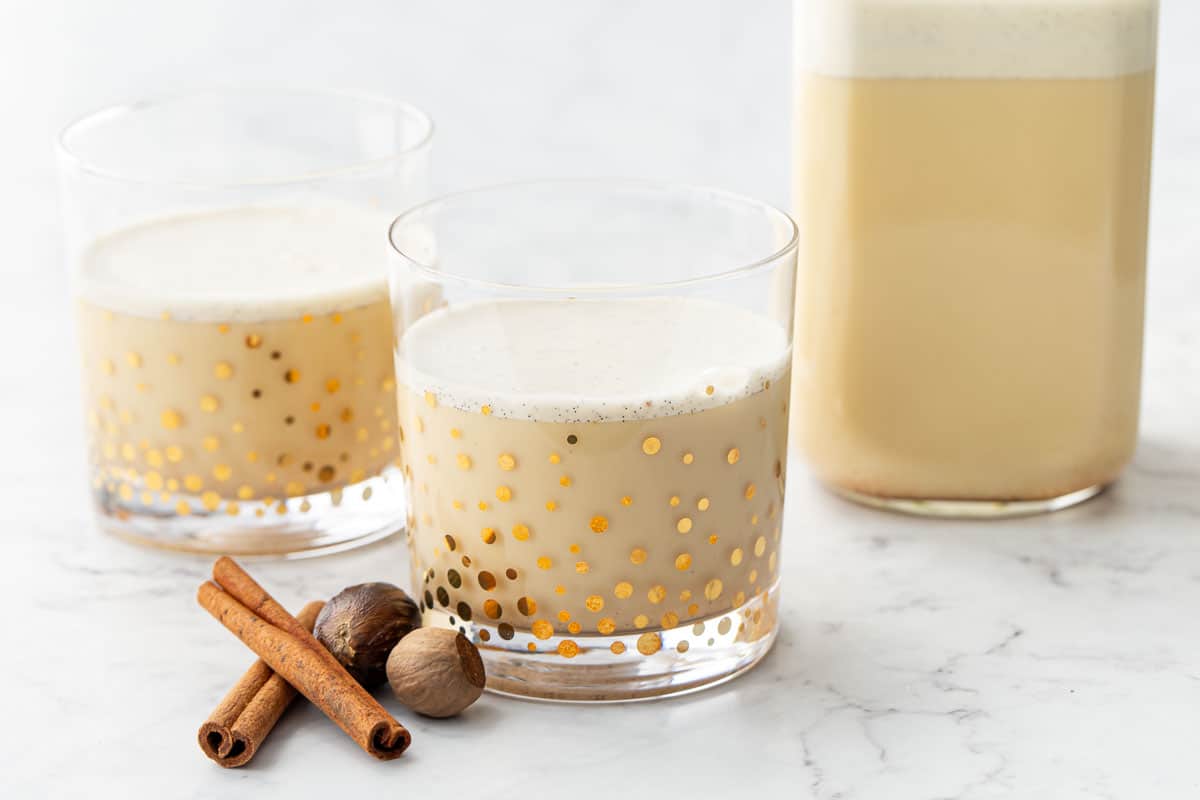Are Postbiotics The New Probiotics In Skin Care? The Surprising Research
We make the case for postbiotics.


Senior Beauty & Lifestyle Director
Senior Beauty & Lifestyle Director
Alexandra Engler is the senior beauty and lifestyle director at mindbodygreen and host of the beauty podcast Clean Beauty School. Previously, she's held beauty roles at Harper's Bazaar, Marie Claire, SELF, and Cosmopolitan; her byline has appeared in Esquire, Sports Illustrated, and Allure.com.
Image by Olga Moreira / Stocksy September 13, 2024 We carefully vet all products and services featured on mindbodygreen using our Our selections are never influenced by the commissions earned from our links. Probiotics—if you're in tune with the wellness space, you've likely heard of these by now. They refer to living organisms that live on our microbiomes, be it the gut or skin. People often use specific diets, foods, or supplements to replant them internally for digestive health. And in the last several years, skin care enthusiasts have taken that same concept to help replant them on the skin, in order to balance and support the skin microbiome. Here's the thing: The study of the skin microbiome is still evolving and, in some ways, just beginning. On a basic level, we know the overall benefits and some of the things that can damage it. But we're still learning much about the intricacies of its workings and how we can best support it. This is why biome skin care is an ever-evolving category. And one area where we've seen a lot of growth, changes, and, unfortunately, misinformation. This is exactly how we've come to the topical probiotic debate of late—after what seemed like a tidal wave of probiotic-infused products, researchers, dermatologists, and cosmetic chemists are skeptical of their efficacy. For good reason. It's a complicated topic but worth exploring—it affects the future of the skin microbiome after all.
The state of biome skin care
If you want to understand biome skin care, you need to understand the three primary categories of biotics: pre-, pro-, and postbiotics. Prebiotics are foods that the natural flora on our skin consumes—when you plant beneficial prebiotics on the skin, the good organisms are able to thrive. (There's a very easy comparison to your own body: When you eat better, you feel better.)
Probiotics are optimal strains of living bacteria replanted on the skin, in order to balance out the natural flora (or they're supposed to be—I'll explain soon.) Postbiotics are the skin-supporting outputs from probiotics (essentially, these are one of the reasons probiotics are beneficial in the first place).
Ideally, these actives work toward a common goal: helping your flora thrive, thereby allowing it to perform the multitude of functions it should. And this is where you see the outward skin benefits.
For example, a robust microbiome acts as a defense system for the skin, crowding out bad bacteria and reducing exposure to stressors. It also tempers inflammation, which wreaks havoc on the skin—and can result in things as simple as flushing or dullness, or as detrimental as premature aging and flare-ups of some skin conditions like acne and rosacea.
"As the largest and most visible organ, the skin not only gives clues into what's happening beneath the surface in terms of immune function, nutrition, oxidative stress, and metabolic issues, to name a few, but it's the body's first line of defense against infection, environmental stressors, and loss of nutrients and water, so addressing the skin is a gateway to overall health and well-being," says board-certified dermatologist Keira Barr, M.D. "The skin microbiome is constantly interacting with our environment and works to support our health by protecting against infection, influencing the immune response, protecting against UV radiation, and helps provide nourishment to the skin cells."
Given the plethora of benefits attached to a healthy, happy flora, it makes sense people would want to use topicals to boost it. And thus, the microbiome and probiotic skin care trend was born. But now that we're several years into it, we better understand what's actually happening on the surface—and not all of it is what we originally thought.
Why you should question probiotics in topicals
The entire point of probiotic skin care was that if you could replant living beneficial bacteria back on the skin—such as Lactobacillus and Bifidobacterium—then you can reap the benefits of a healthy microbiome, as they will repopulate the flora in a positive manner. (The concept was lifted straight from their supplement counterparts.) And these probiotic topicals could encourage more diversity in the biome, which can be lost due to modern lifestyle factors like the environment, stripping skin care regimens, and even factors like stress.
In theory, great. In practice, not exactly what's happening.
Modern skin care products contain preservatives. While preservatives get a bad name in clean beauty, they are very much needed in order to keep the formula free of pathogens, ensure stability, and guarantee shelf-life longevity. (Of course, you can and should avoid those that have been shown to be endocrine-disrupters or not eco-friendly.
But there are new preservative systems used that have been shown to be effective in formulas as well as safe for skin and the environment.) And the thing with preservatives is they are not discerning, nor do they have the ability to identify what should be living (probiotics) and what shouldn't be (harmful bacteria, mold, and so on).
"Live bacteria in skin care is overrated. More so, it's not even practical to have them because anytime you're looking at a cleanser, a moisturizer, or a cream, there are preservatives in there. And there is no way to have a living bacteria in that same product," board-certified dermatologist Whitney Bowe, M.D., says in this podcast episode.
There are actually two main kinds of non-living "probiotics" (or they are called probiotics in their marketing, but technically speaking, they're not) typically found in skin care. Para-probiotics are inactivated bacteria—or once-living bacteria that have been neutralized.
Some evidence suggests you may see some benefits from them1; however, there is no live cross-talking with the skin itself. Additionally, there are concerns about having bacteria membranes in the formula as they may cause irritation.
The second kind is lysates, which are bacterial fragments that are created through fermenting food—these contain actives, but they're not targeted or uniformly reproducible. (Read: You may not be getting exactly what you want every single batch.)
Now, there are brands that use unique technologies and formulations to ensure that the strains remain viable and alive. However, this comes at a cost: These ingredients and the tests that are done to ensure they are living aren't cheap. And it takes research on the consumer's part to make sure the brand provides the insurance of effective actives.
Overall, you should never assume that because a brand says they use probiotic technology they mean that the formula contains living bacteria.
Postbiotics and the future of skin care
So where does this leave biotic skin care in general? The need to innovate. Technically, those non-living "probiotics" could fall under the postbiotic umbrella, but as we've discussed—the jury is still out as to if they're beneficial for the skin. Regardless, they are certainly not innovative.
Instead, we look to technologically advanced, unique, and highly targeted postbiotics to care for the skin.
Researchers have been able to identify key beneficial outputs from the bacteria living on our skin naturally. I like to think of these as synergistic gifts, from our microbiome to our skin; our skin, in turn, becomes a more harmonious and habitable place for the bacteria. A beautiful cycle is born. These outputs are called postbiotics.
In our skin's natural ecosystem, postbiotics come in the form of several key outputs. For example, the strain Staphylococcus epidermidis produces specific serine protease enzymes, and the strain Staphylococcus hominis produces antimicrobial peptides, both of which support the skin's immune function.
In an ideal world—one in which your skin's ecosystem is unbothered by environmental agitators, internal stressors, and other damaging irritants—your microbiome would do this all on its own, all of the time. That's not the world we live in.
So not only were researchers able to identify these very specific outputs, but they were able to recreate them, en masse, without having to inactivate or fragment bacteria (like para probiotics or lysates). This technological development means researchers can create targeted actives—which are able to immediately activate cross-talking with the skin directly.
Textbook-sounding explanation aside, this is very cool. See, when actives are able to directly cross-talk with the skin, they can inspire changes in skin behavior—rather than just enacting superficial changes. (It's why dermatologists obsess over retinol's ability to interact with retinoid receptors or L-ascorbic acid's ability to inspire collagen cross-linking.)
In the case of postbiotics, we find a few impressive changes. (And a fair warning: We get very science-heavy here, but it's a dense topic.) Let's look at Lactobacillales, the "educational" bacteria of the skin. It's actually a strain of bacteria that populates our skin in our youth2 but declines as we age. As its role as educators, it teaches skin to act young, protect itself, and revitalize barrier function. Its postbiotics are things like oligopeptides (even more specifically oligopeptide-5 through 13), fatty acids (including UFA, PUFA, and EFA), as well as biosurfactants, like rhamnolipids. And now, through modern technology, we are able to bioidentically recreate these natural postbiotics and infuse them into skin care.
Once on the skin, they are able to cross-talk with various receptors (such as G-Protein coupled receptors, epidermal growth factor-receptors, and toll-like receptors) to improve the epidermis framework regeneration, skin hydration, reduce signs of aging thanks to exposure to irritants and pollutants, stimulate microcirculation, support the skin's immune system, and calm inflammation.
The takeaway
I'm often torn between looking to new, technological advances in skin health to better treat my own—and looking to the basic, tried-and-true actives we have long known to care for our precious outer organ. I'd like to think of postbiotics as the perfect blend of the two. The mechanisms of how they work are as old as human existence. It's the way our skin was supposed to behave when at its healthiest. It's the way our skin wants to behave. But now, we have the power and privilege of modern medicine and science to help us get there.

 BigThink
BigThink -v1646695196476.jpg?1148x800)
































